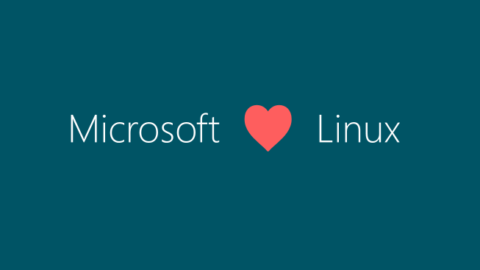Microsoft joined the Linux Foundation yesterday. The news has been greeted, unsurprisingly, with various headlines of the hell freezes over variety. To closer observers of Microsoft, the commentary is, rightly, along the lines of “I am surprised it took this long”.
This move comes as no surprise, we have spoken relatively recently about the ongoing changes at Microsoft and about the changing culture and strategy under Satya Nadella, with the support and leadership of the current Microsoft board. The company has recognised the changes coming in the infrastructure software space, and is focused on co-operation and collaboration with a wide variety of communities. This is a good thing. It may be hard for many to accept, but actions speak louder than words, and the actions of Microsoft over the last few years are numerous, and more importantly quantifiable.
The question for many is still why? As we have mentioned in the past that there are ultimately two operating systems in the world, cloud and mobile, everything else is an implementation detail, albeit an interesting implementation detail. In Microsoft’s case this means getting workloads onto Azure. The type of workload does not matter for now, the number of customers, the size of the workload and the overall velocity of workload growth does.
All of these moves by Microsoft, from joining the Linux Foundation, to partnerships with companies like Pivotal for running Cloud Foundry; from hiring people like Brendan Burns from Google to continue working on Kubernetes, to investing in Mesosphere; from a deep strategic relationship with Docker, to making the Ubuntu userland available natively on Windows 10; from announcing that SQL Server runs on Linux, to open sourcing Powershell – all of these moves are about simplifying the experience for developers and operations, providing a cloud option that a CIO can feel comfortable with, and ultimately about getting workloads onto Azure.
In the past a company like Microsoft would have gone its own way. In an era where open source software is upending traditional business models and providers are being forced to think in terms of providing services in the cloud over selling shrink wrapped software, that is no longer possible. Allied to this we have had the emergence and incredible growth of AWS over the last number of years. This leads us to a world where collaboration is the only option, and this collaboration sometimes manifests itself in what seem to be, on first glance, unusual ways which give rise to interesting coalitions.
The next era of computing is going to be all about intelligent uses of data, workloads are the gateway to data. If the workloads are not on your cloud to start with, the rock will have to move up a far steeper hill.
Right now it is all about the workloads, next comes the data.
Disclaimer: Microsoft, Amazon, Pivotal, Docker, The Linux Foundation and The Cloud Foundry Foundation are current RedMonk clients.

Microsoft Connect: On diversity of platforms, code and humans - Enterprise Irregulars says:
December 2, 2016 at 5:28 am
[…] It has just become a platinum member of the Linux Foundation. Fintan wrote the announcement up here. Of course not everything history tends to leave a long shadow. Simon Phipps makes the case that […]